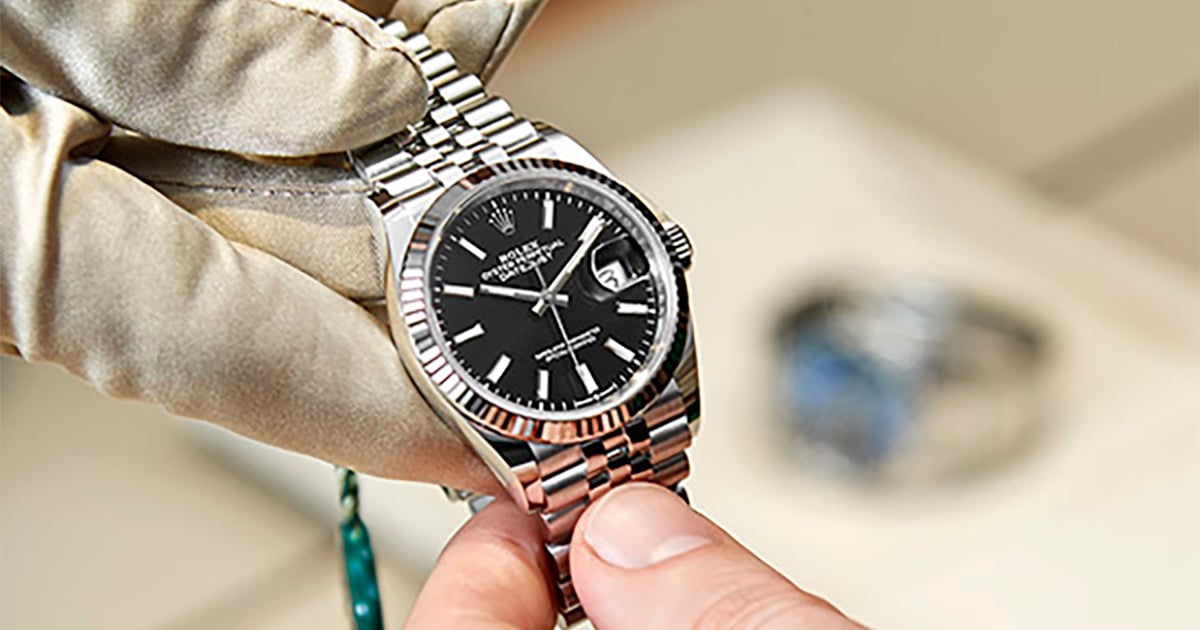While our initial impression of the Deep Dive watch may suggest that achieving the 1000 meter depth rating is a matter of adding metal to the case, an inspection of what’s inside the case demonstrates that building a watch that will operate reliably at this depth requires the addition of more than metal. In fact, two keys to the 1000 meter depth rating for the Heuer Deep Dive were incorporating a significantly thicker crystal (and building a collar to retain the crystal) and using larger gaskets to seal the case-back. Yes, stainless steel is added to the case, but the purpose of this additional steel is to retain the thicker crystal and to provide larger seating surfaces for the oversized gaskets. The crystal retaining system prevented the crystal from being pushed out of the case and/or distorting during ascents and descents.
Put it all together, and Heuer’s first Deep Dive watch measured 41.3 millimeters across the bezel, compared with 39.5 millimeters for the Reference 844. The real difference, however, came in the thickness and weight of the two cases, with the Deep Dive having a thickness of 15.4 millimeters and weighing 138 grams (on its Jubilee bracelet), and the Reference 844 coming in at 12.7 millimeters thick and a weight of 121 grams (on the same style bracelet).
The June 1982 price list shows that the Deep Dive, on a rubber strap, sold for $295.00, which was over twice the price of the Reference 844. The Heuer Deep Dive (Reference 980.023) would be sold by TAG Heuer through the end of the 1980s.
Prior to introducing this new Aquaracer, Heuer had produced only two cheap rolex replica watches with 1000 meter depth ratings, with these two watches being introduced in 1982 and 1984. We will focus on these two 1000 meter watches from Heuer, and and three other TAG Heuer dive watches that paved the way for the newest Aquaracer.
Of course, to write about watches with 1000 meter depth ratings itself raises the question of why enthusiasts are so keen on these watches (or for that matter watches with 300 or 500 meter depth ratings. The deepest dive on record for a human being is 332 meters, and a watch with a 200 meter depth rating will be more than sufficient for even the best swimmer or diver.
My view is that watch enthusiasts pursue “deep dive” or “ultra deep dive” watches for the same reasons that car enthusiasts love the street cars that have 500 horsepower, can reach 197 miles per hour and go from 0 to 60 in 3.2 seconds. Of course, we rarely get close to the “top end” of the machine, but we admire the engineering, materials and construction that give us this capability. And besides, we will feel that much more confident if we are wearing our 1000 meter dive watch when we get caught in a rainstorm or roll up our sleeves to do the dishes.

1982 – Heuer “Deep Dive” (1000 Meters) – Reference 980.023
Heuer introduced its first dive watches in 1978, with the Reference 844 being the flagship of these very first models. These first Heuer dive watches were waterproof to 200 meters, and used either quartz or mechanical movements. The word “Professional” on the dial signified that, rather than being designed for recreational swimmers, sailors and surfers, the watches were built for those who actually pursued diving as an occupation. Diving had become a popular pastime in the 1960s and 1970s, and Jack Heuer has described how – in the late 1970s – dealers who sold diving equipment needed a source of reliable, affordable dive watches.
In the late 1970s, the gold standard of popular dive watches was the Rolex Submariner and Jack Heuer is unapologetic in admitting that the Rolex dive watches were the starting point for the line-up of dive watches that Heuer would develop. One significant difference, however, was that most of the early Heuer dive replica watches paypal would use quartz movements, which offered better accuracy than their mechanical counterparts and less wear and tear on the crown from winding and setting the watches. As production of quartz watches ramped up over the years, Heuer’s use of quartz movements would also offer a price advantage compared with other brand that used mechanical movements.
From 1978 to 1981, Heuer introduced a variety of dive watches, totaling around 20 different models. Dials were black or orange, cases were in stair-steps from 28 millimeters up to 42 millimeters, and movements were either automatic or quartz. For enthusiasts who were more focused on “desk diving”, Heuer even offered dive watches with day / date displays.
Then in 1982, Heuer made a big jump, or perhaps we would call it a big dive, offering a watch that at first glance looked a lot like the Reference 844 and Reference 980.xxx predecessors, but the “1000 meters” printed on the dial confirmed that this was a very different animal. While many dive watches of the 1960s and 1970s used radically different styles of cases on their way to securing the 1000 meter depth rating (for example, the monobloc cases used for the Jenny Caribbean, the first 1000 meter dive watch), Heuer’s Reference 980.023 (which collectors call the “Deep Dive”) followed the basic geometry of Heuer’s previous dive watches, with the exceptions being the Deep Dive’s thicker case and the crown being moved to the four o’clock position.

